Pain is a complex topic, as it is subjective and depends on the individual pain threshold. However, one thing is hard to argue with - pain is never pleasant (unless you are a masochist, of course). It is difficult to ignore, it affects not only the physical condition, but also the psyche, making a person irritable and nervous.
When you are experiencing certain health issues, it can be frustrating to feel like others don't understand how much pain you are in. Well, if your condition is one of top 20 types of worst painthat a person can endure, then you are certainly not exaggerating the extent of your suffering. The list was compiled by specialists from the English National Health Service (NHS). All the diseases in it are ranked in random order.
20. Endometriosis
 It is a condition that statistically affects one in 10 women worldwide. Endometriosis occurs when the tissue that lines the uterus (called the endometrium) grows and extends beyond its boundaries. Under favorable conditions, endometriosis can also occur outside the reproductive system, such as in the belly button.
It is a condition that statistically affects one in 10 women worldwide. Endometriosis occurs when the tissue that lines the uterus (called the endometrium) grows and extends beyond its boundaries. Under favorable conditions, endometriosis can also occur outside the reproductive system, such as in the belly button.
Its most unpleasant symptoms include pelvic pain, pain during menstruation, and pain during and after sex.
19. Cluster headaches
This specific type of headache occurs on one side of the head, usually around the eyes. The NHS classifies the pain as “very severe” and we would add that the condition is sometimes referred to as “suicide headaches”. Because people with cluster headaches are willing to take their own lives to get rid of the excruciating pain.
18. Capsulitis
 Also called frozen shoulder, the condition occurs when the joint becomes so tight and rigid that it is nearly impossible to perform basic movements, such as lifting the arm. Capsulitis is common in people with diabetes.
Also called frozen shoulder, the condition occurs when the joint becomes so tight and rigid that it is nearly impossible to perform basic movements, such as lifting the arm. Capsulitis is common in people with diabetes.
17. Broken Bones
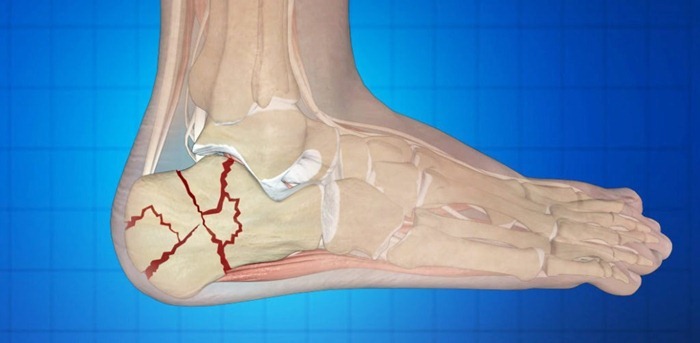 A bone fracture does not always cause excruciating pain, and there are not always external signs of injury, such as severe swelling. However, most often, a bone fracture is accompanied by such discomfort that the victims literally howl and writhe from it.
A bone fracture does not always cause excruciating pain, and there are not always external signs of injury, such as severe swelling. However, most often, a bone fracture is accompanied by such discomfort that the victims literally howl and writhe from it.
A broken bone can heal, but the older you are and the larger the bone, the longer it will take to heal.
16. Shingles
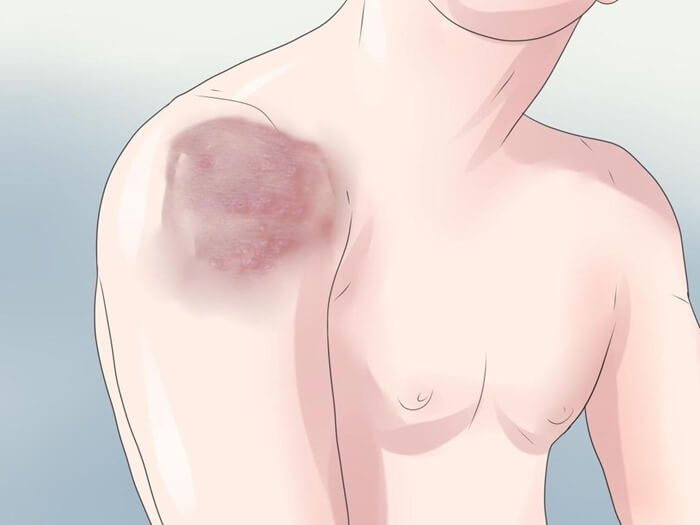 One type of herpes manifests itself as a rash or blisters that follow the nerves. It causes a sensation of intense burning or itching, as well as pain even with a light touch. Interestingly, shingles can cause a patient to suffer from lower back pain, which, it would seem, has no direct connection with the disease.
One type of herpes manifests itself as a rash or blisters that follow the nerves. It causes a sensation of intense burning or itching, as well as pain even with a light touch. Interestingly, shingles can cause a patient to suffer from lower back pain, which, it would seem, has no direct connection with the disease.
15. Fibromyalgia
 It is a long-term condition that causes pain throughout the body. It affects women more often than men. Fibromyalgia is difficult to diagnose because the bones, joints, muscles, and ligaments affected are usually not damaged, but simply dysfunctional. Lady Gaga suffers from fibromyalgia and has spoken extensively about what it is like to live with it.
It is a long-term condition that causes pain throughout the body. It affects women more often than men. Fibromyalgia is difficult to diagnose because the bones, joints, muscles, and ligaments affected are usually not damaged, but simply dysfunctional. Lady Gaga suffers from fibromyalgia and has spoken extensively about what it is like to live with it.
14. Migraine
 Those who have experienced a migraine at least once will never forget this terrible sensation of pulsating pain on one side of the head, nausea and sensitivity to light. Regular painkillers and popular sedatives do not always help with migraines. All that remains is to lie in a dark, quiet place and wait until the attack passes.
Those who have experienced a migraine at least once will never forget this terrible sensation of pulsating pain on one side of the head, nausea and sensitivity to light. Regular painkillers and popular sedatives do not always help with migraines. All that remains is to lie in a dark, quiet place and wait until the attack passes.
13. Complex regional pain syndrome (CRPS)
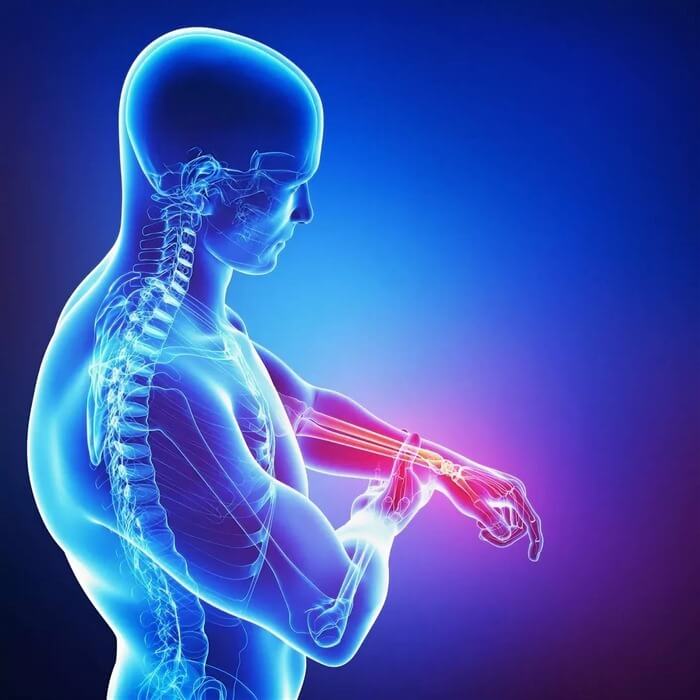 Characterised by severe and long-lasting pain that can occur after a bone is broken, burned or cut. The pain is described by the NHS as being “constant and intense” and often “completely out of proportion to the severity of the original injury”.
Characterised by severe and long-lasting pain that can occur after a bone is broken, burned or cut. The pain is described by the NHS as being “constant and intense” and often “completely out of proportion to the severity of the original injury”.
12. Displacement of intervertebral discs
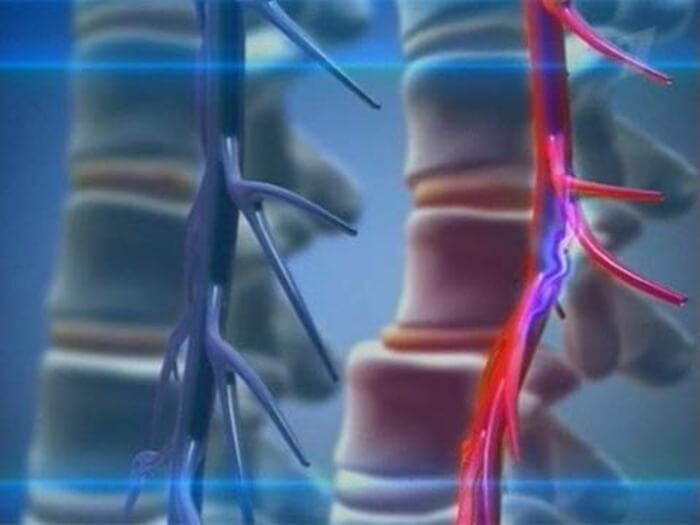 Intervertebral discs are flat, round pads located between the vertebrae. They prevent the vertebrae from rubbing against each other. At the center of each disc is a gelatinous mass called the nucleus pulposus, which is surrounded by a dense fibrous ring.
Intervertebral discs are flat, round pads located between the vertebrae. They prevent the vertebrae from rubbing against each other. At the center of each disc is a gelatinous mass called the nucleus pulposus, which is surrounded by a dense fibrous ring.
Displaced discs are a common cause of back problems, such as pain when moving, playing sports, and even coughing.
11. Heart attack
 This life-threatening condition usually causes pain in the center of the chest that may feel like heaviness, tightness, or squeezing. In some people, the pain spreads to the jaw, neck, back, arms, or abdomen. In some less common cases, people with diabetes may experience a heart attack without actually feeling pain due to damaged nerves from their condition.
This life-threatening condition usually causes pain in the center of the chest that may feel like heaviness, tightness, or squeezing. In some people, the pain spreads to the jaw, neck, back, arms, or abdomen. In some less common cases, people with diabetes may experience a heart attack without actually feeling pain due to damaged nerves from their condition.
10. Sciatica
 An excruciating, aching pain that runs down the leg and occurs when the sciatic nerve (the longest in the body) is pinched or damaged by a back injury. Patients with sciatica typically do not experience severe back pain, but instead feel it in the lower back (and below) and in the legs, down to the calf.
An excruciating, aching pain that runs down the leg and occurs when the sciatic nerve (the longest in the body) is pinched or damaged by a back injury. Patients with sciatica typically do not experience severe back pain, but instead feel it in the lower back (and below) and in the legs, down to the calf.
9. Sickle cell anemia
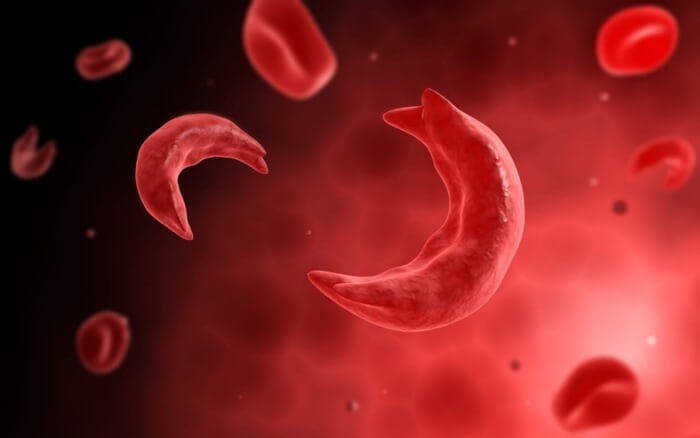 A hereditary disease passed from parents to children, it causes a "pain crisis" localized in the bones and joints. Pain outbreaks can occur over several weeks, and sometimes last up to 7 days in a row.
A hereditary disease passed from parents to children, it causes a "pain crisis" localized in the bones and joints. Pain outbreaks can occur over several weeks, and sometimes last up to 7 days in a row.
8. Appendicitis
 No one thinks about the small appendage of the cecum - the appendix - until it makes itself known. Inflammation of the appendix is called appendicitis and is treated only surgically.
No one thinks about the small appendage of the cecum - the appendix - until it makes itself known. Inflammation of the appendix is called appendicitis and is treated only surgically.
The pain of appendicitis usually starts in the center of the stomach and then moves to the lower right side of the abdomen, where it intensifies. It is one of the most severe types of pain for humans. Perhaps for mammals, which also have an appendix, but they will not tell you about it.
It is curious that the appendix was previously considered a completely useless rudiment inherited from our ancestors. However, modern doctors have found that this vermiform appendage is still useful for the body, it participates in the formation of intestinal microflora, as well as in endocrine and immune processes. But how is still unclear.
7. Kidney stones
 Until the kidney stone passes out of the ureter, it will cause sharp spasmodic pain in the lower abdomen or lower back. Some compare this sensation to "cutting off the frenulum of the phallus with a blunt knife."
Until the kidney stone passes out of the ureter, it will cause sharp spasmodic pain in the lower abdomen or lower back. Some compare this sensation to "cutting off the frenulum of the phallus with a blunt knife."
6. Arthritis
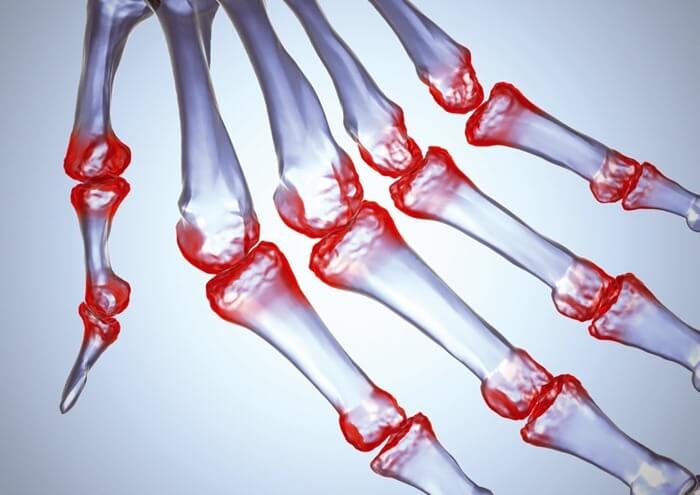 The disease develops mainly in older people and causes constant pain in the joints - usually in the knees, hip joints and hand joints. The pain does not subside even at night, moreover, it intensifies, since during the day the joints "warm up" from movement and hurt less.
The disease develops mainly in older people and causes constant pain in the joints - usually in the knees, hip joints and hand joints. The pain does not subside even at night, moreover, it intensifies, since during the day the joints "warm up" from movement and hurt less.
5. Acute pancreatitis
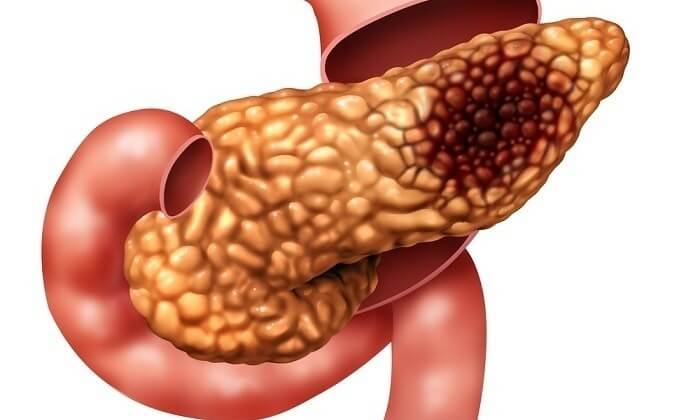 When the pancreas is damaged by inflammation and stops working properly, the condition is called acute pancreatitis. Patients experience a dull, aching pain in the abdomen that is most severe after eating fatty foods.
When the pancreas is damaged by inflammation and stops working properly, the condition is called acute pancreatitis. Patients experience a dull, aching pain in the abdomen that is most severe after eating fatty foods.
4. Gout
 The disease occurs when uric acid levels are high, often as a result of eating certain foods. Gout causes joint pain, usually at the base of the big toe.
The disease occurs when uric acid levels are high, often as a result of eating certain foods. Gout causes joint pain, usually at the base of the big toe.
3. Gastric ulcer
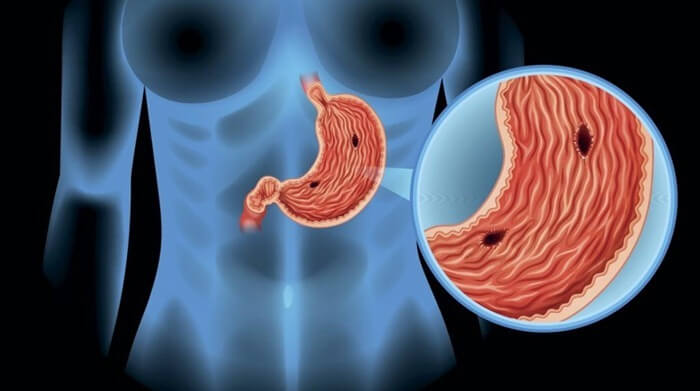 This disease causes a defect in the gastric mucosa, causing a burning pain in the abdomen, usually between meals.
This disease causes a defect in the gastric mucosa, causing a burning pain in the abdomen, usually between meals.
2. Pain after surgery
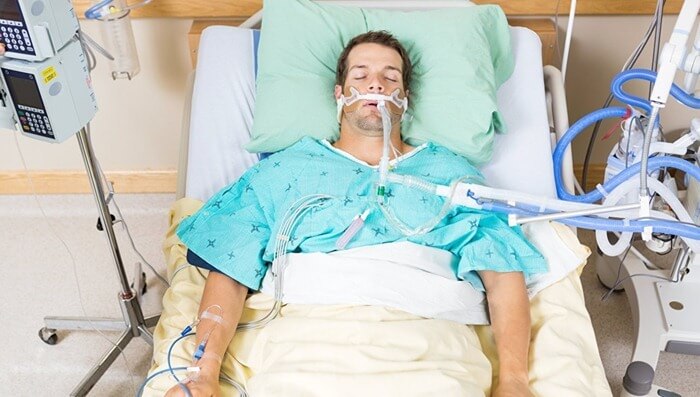 Surgery is an invasive procedure, so it’s no surprise that it can cause a lot of pain. Although the location and intensity of the pain will vary depending on the type of surgery. But the NHS reminds patients that “too much pain after surgery is not a good thing” and there’s no need to heroically endure it. The best option is to seek help from your doctor.
Surgery is an invasive procedure, so it’s no surprise that it can cause a lot of pain. Although the location and intensity of the pain will vary depending on the type of surgery. But the NHS reminds patients that “too much pain after surgery is not a good thing” and there’s no need to heroically endure it. The best option is to seek help from your doctor.
1. Trigeminal neuralgia
 Topping the list of the worst pains in humans is a condition called Fothergill's disease, characterized by sudden, severe, shooting facial pain. Although the attacks are usually short-lived — a few seconds to two minutes — they can occur up to 100 times a day. According to Stanford University anesthesiologist David Yeomans, patients consider trigeminal neuralgia to be the worst kind of pain in the world. Some even stop brushing their teeth because this simple procedure causes pain that sufferers describe as being like being struck by lightning in the face.
Topping the list of the worst pains in humans is a condition called Fothergill's disease, characterized by sudden, severe, shooting facial pain. Although the attacks are usually short-lived — a few seconds to two minutes — they can occur up to 100 times a day. According to Stanford University anesthesiologist David Yeomans, patients consider trigeminal neuralgia to be the worst kind of pain in the world. Some even stop brushing their teeth because this simple procedure causes pain that sufferers describe as being like being struck by lightning in the face.
Other Doctors' Opinions on Pain Ratings
Not all doctors agree on which pain is the worst, according to the NHS. Gary Leroy, a family doctor in Dayton, Ohio, told The Independent that the pains listed were indeed severe and common. However, Leroy recommended adding two other conditions to the list – back pain, as “the most common thing we see in primary care” and “toothache”.
According to him, “chronic low back pain affects 80 percent of the world’s population at some point in their lives.” Toothaches are also common and can be extremely painful, especially if a nerve is damaged.
It is also surprising that the NHS list does not include the pain women experience during childbirth. It is unlikely to be any less intense or unpleasant than passing a kidney stone or suffering from a stomach ulcer.

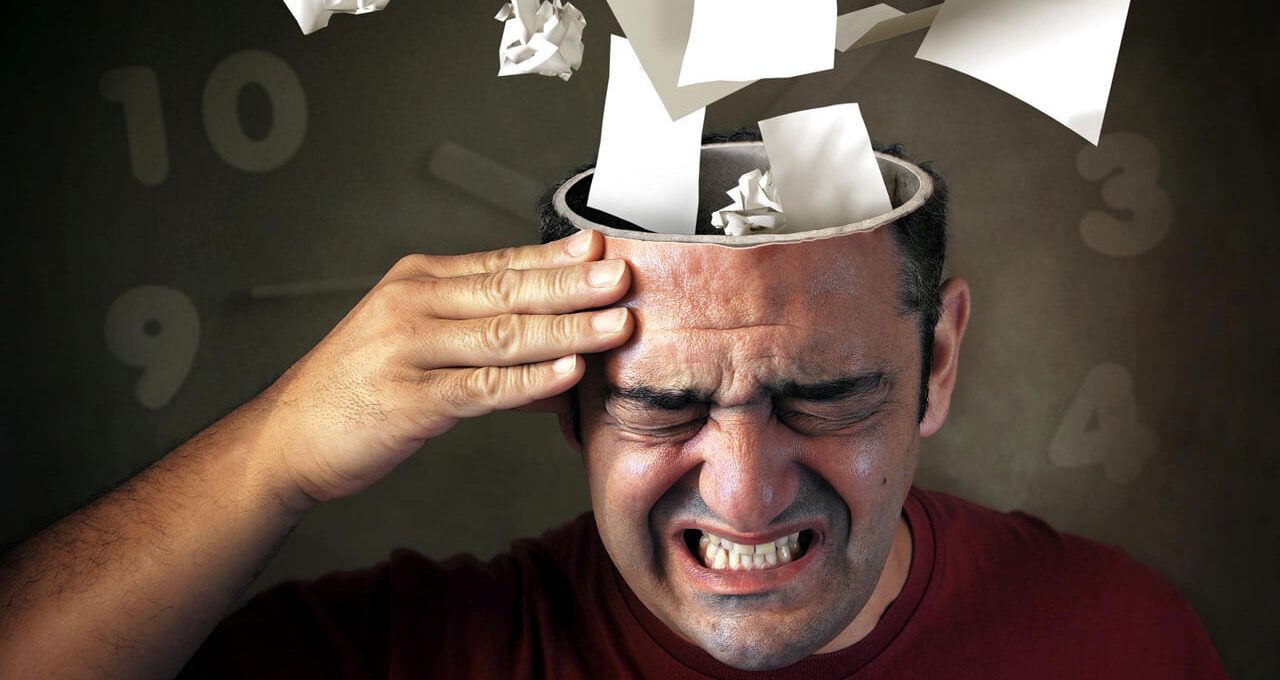












Оставить Комментарий